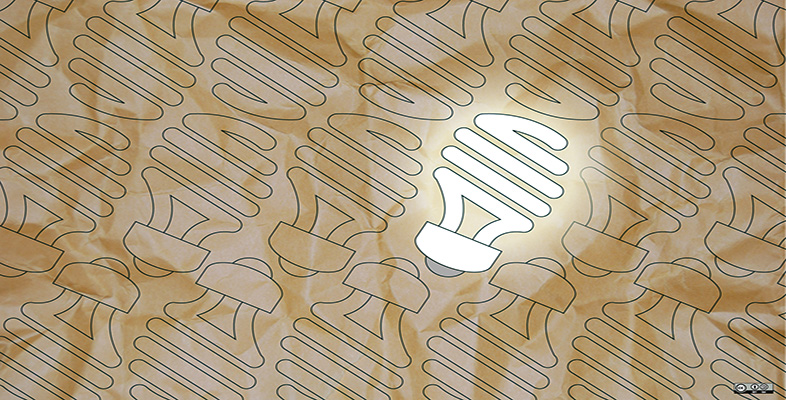1 What is innovation?
1.1 Defining Innovation
This course is an exploration of the nature of innovation and the role that representations play in enabling an innovation to be shared, explored and developed. We’ll start by exploring what we mean by the word innovation.
Activity 1 Describing innovation
What does the word innovation mean to you? Use the text box to record your initial impressions when you think of innovation.
Discussion
Perhaps you thought of an innovative product, such as a smartphone or an electric car, or perhaps you thought of a famous innovator, such as James Dyson or Mark Zuckerberg. Maybe you thought of a ‘light-bulb moment’ – a moment of creative discovery, like in Figure 1. These are all good answers and, as they indicate, the word innovation covers a broad spectrum of meanings. In this course we have a specific idea of what innovation means which we will explore in the remainder of this section.
In its broadest sense innovation comes from the Latin verb innovare, which means to make something new. This definition may seem too simple and straightforward, indeed there are many modern definitions of innovation, which suggest that the concept is quite complex and is difficult to capture in a few words. Some definitions include:
Innovation is the successful exploitation of new ideas.
(Innovation Unit, 2004)
A specific tool of entrepreneurs, the means by which they exploit change as an opportunity for a different business or service. It is capable of being presented as a discipline, capable of being learned, capable of being practiced.
(Drucker, 1985)
A process of matching technical possibilities to market opportunities, through activities including experimental development and design, trial production and marketing.
(Freeman and Soete, 1997)
A process of turning opportunity into new ideas and of putting these into widely used practice.
(Tidd and Bessant, 2009)
While definitions of innovation may vary in their wording, the common theme is that innovation involves coming up with ideas and putting these to practical use, and it is this meaning that we use in this course. It is important to realise the distinction here between invention and innovation. Invention is the process of creating and developing ideas, concepts or designs. On the other hand, innovation is the process of developing a new or improved product, service or system for adoption into use, and possibly widespread diffusion. The key difference is that innovation results in something that can be used, either a product service or system; these are the outputs of innovation, and are discussed in more detail in Section 1.2.
An innovation is not just an idea; it is also the process of putting the idea into practice. This involves an underlying pattern of activities which form the basis of innovation, and include developing a vision, thinking about how the vision can be realised through design, and specifying details so that the vision can be realised. A necessary and important part of almost all these activities are the representations that are used. In the early stages of the innovation process, representations are used to develop and share ideas, often through sketches, diagrams or concept maps. But, these ideas do not constitute an innovation until they have been transformed into something that has a potential for practical application. This transformation is where design occurs and a range of representations including drawings, models and diagrams are used to support the development of a vague, but potentially innovative, idea into something real and specific that has potential for practical application. Representations have an equally vital role to play as ideas are grown for adoption and diffusion, including drawings and instructions that contain all the information necessary for the realisation of a product, service or system, as well as posters and models that describe the innovation and encourage users to engage with it.
This description may suggest that innovation follows a nice neat sequence of activity. This is rarely true; instead it is typically a messy iterative process in which context, people and the various materials they engage with all need to be taken into consideration. These various factors add to the complexity of the innovation process, but they are also the source of innovation as described in Section 1.3. At every stage, innovation is an interactive process in which the various sources of innovation are engaged and linked in some way, providing both requirements and constraints which inform decisions and make the output of innovation realistic and useful.

